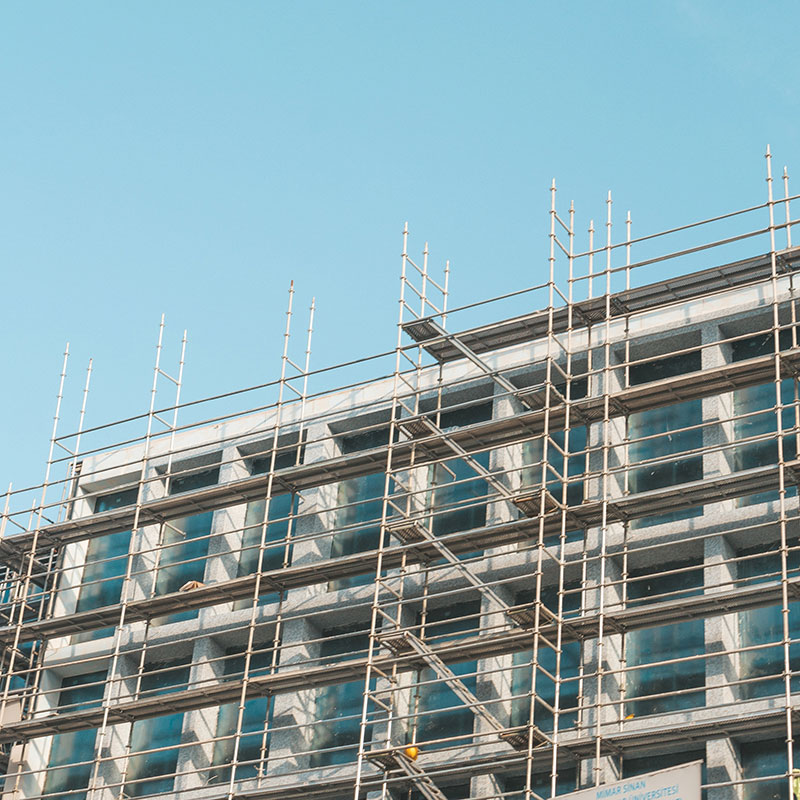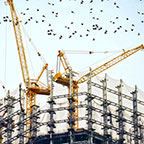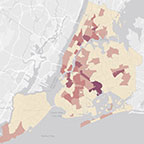
 Department of City Planning311
Department of City Planning311 Search all NYC.gov websites
Search all NYC.gov websites
Housing and Economy
Fair Housing Data and Analysis

The Where We Live NYC Plan identifies goals, strategies, and actions to advance fair housing. As part of this effort, the Department of City Planning will analyze housing growth and loss, low-cost housing, and demographic trends. This analysis will inform future land use changes that encourage equitable growth and affordability.
Select from the menu below to view our fair housing data and analysis products.
Equitable Data Development Explorer
The City of New York is committed to promoting fair housing and equitable development throughout the five boroughs, as described in the Where We Live NYC plan. Part of that commitment is better equipping New Yorkers with data to facilitate challenging conversations about housing affordability, racial equity, displacement, and many other issues related to the future of the city and its neighborhoods.
The Equitable Data Development Explorer provides easy access to a wide range of data to inform public discussions about racial equity and planning for a fairer city.
Where is Housing Being Added in New York City?
New construction, alterations to existing buildings and demolitions all play important roles in how much housing New York City has. Explore these interactive charts to better understand where housing is being added or lost in New York City.
2022 NYC Housing Production Snapshot
The 2022 Housing Production Snapshot summarizes housing completions and permits for 2022 by borough and neighborhood. It also looks at the pipeline of expected new housing. This analysis is a first step in understanding which neighborhoods are experiencing the most recent housing growth and planned development. It will inform future land use changes that encourage equitable housing development, a critical strategy of the Where We Live NYC Plan.
Net Change in Housing Units, 2010-2020
UPDATE: Now available as an interactive report. This report analyzes housing units added and lost through new construction, demolition, and alterations, offering insight into how changes, such as the conversion of non-residential buildings and the combination or subdivision of existing apartments, are affecting housing supply. View a static version of the report here.
DCP Housing Database
The Department of City Planning’s Housing Database contains all Department of Buildings-approved housing construction and demolition jobs filed or completed in New York City since January 1, 2010. It includes all three construction job types that add or remove residential units: new buildings, major alterations, and demolitions, and can be used to determine the change in legal housing units across time and space.
More Housing Info Briefs & Reports
- Rezoning Lookback Reports are analyses of qualifying rezonings approved in 2009, in line with Local Law 162.
- 2021 NYC Housing Production Snapshot summarizes housing completions and permits for 2021 by borough and neighborhood. It also looks at the pipeline of expected new housing.
- New Housing Permits in the First Half of 2022 summarizes a spike in New York City housing permits before the June 2022 expiration of the 421-a tax benefit.
- 2020 NYC Housing Production Snapshot summarizes housing completions and permits for 2020 by borough and neighborhood. It also looks at the pipeline of expected new housing.
- 2020 Mid-year Housing Production Snapshot summarizes housing completions and permits for the first half of 2020 by borough and neighborhood. It also looks at the pipeline of expected new housing.
- Greenpoint-Williamsburg Community Update (2019) is an analysis of available data on changes in housing, population, the economy and open space within Greenpoint and Williamsburg, Brooklyn since the 2005 waterfront rezoning.
- How much housing is built as-of-right? (2019) provides a better understanding of the role of land use review in facilitating new housing. The analysis looks at how much new housing was built following site-specific discretionary approvals, and how much was built as-of-right, including in areas where neighborhood rezonings increased housing capacity.
- 2018 NYC Housing Production Snapshot looks at new housing permits and completions in 2018, a year in which more housing was produced than in any other year since the mid 1960s.
- NYC Housing Production and Building Heights Info Brief (2018) presents building height categories that play a role in producing new affordable as well as market-rate housing.
- 2010 - 2017 NYC Housing Production Snapshot presents a look at new housing completions that have increased every year since hitting a low of 10,000 new units in 2012.
Economic Info Briefs and Reports
- FRESH by the Numbers evaluates the Food Retail Expansion to Support Health program's efforts to make New York City healthier through incentivizing the creation of grocery stores in high need areas
- Zoning for a Resilient Economy: Lessons from NYC's History and Ideas for the Future explores best practices and potential zoning reforms to support equitable and resilient job growth.
- The NYC Hotel Markets Analysis (2020) is an overview of the hotel industry and accommodation market before and after the onset of the COVID-19 pandemic.
- Retail Activity in NYC: COVID Recovery Across 24 Neighborhoods (2020) evaluates storefront activity during the city's reopening from COVID shutdowns. It analyzes survey data collected in 24 retail corridors during July 2020. The study assesses the level of ground-floor business activity in each corridor and variation between different types of businesses. It also compares current activity to a pre-COVID baseline in 2018.
- Emerging Industries and Sustainable Transportation Info Brief (2019) analyzes travel choices of workers and visitors to office, institutional, and industrial businesses in transit-oriented locations outside the Manhattan core. Traditional offices and an emerging set of businesses that contain a blend of industrial and office functions are increasingly locating in these areas–the info brief describes how they are more reliant on transit and other sustainable means of transportation than traditional industrial businesses are.
- Assessing Storefront Vacancy in NYC: 24 Neighborhood Case Studies (2019) is a data-driven analysis of recent trends on 24 retail corridors across the five boroughs. The study finds that the retail industry is changing rapidly across the city and that vacancy conditions can vary significantly from neighborhood to neighborhood, and even street to street. While certain retail corridors were found to have a concentration of vacant storefronts, vacancy trends cannot be explained by any single factor and are influenced by multiple local and citywide trends.
- Occupations of New York City Workers (2019) analyzes workers' occupations, or function within the workplace, and earnings over time. The research finds that in the recent economic environment, the highest and lowest skill occupations have led employment growth.
- NYC Workers without a Bachelor's Degree (2019) shows that workers without a bachelor's are often competing with degree-holding workers for jobs within the same occupations, and explores which occupations and industries may provide their best earnings opportunities in the current economic environment.
- Can Industrial Mixed-Use Buildings Work in NYC? (2018) is a study that assesses the opportunities for and challenges of constructing new buildings that combine industrial uses with office, residential, retail, or other uses. The study analyzes the feasibility of these buildings, for which there are few precedents, from three perspectives: tenanting and operational compatibility, physical feasibility, and financial feasibility. The study found that construction of new industrial mixed-use buildings can be feasible with certain compatible tenant mixes, suitable sites, and favorable real estate market conditions. However, these buildings face a number of physical and financial constraints, and should not be expected to comprise the prevailing building type within any area. Based on these conclusions, the City can support individual projects on an opportunistic basis in cases where such developments are feasible.
- The Geography of Jobs (2017) presents a snapshot of the NYC metro economy to contextualize the city's extraordinary economic activity in the wake of the Great Recession with the economic activity in the surrounding region. Recognizing that NYC has, and is dependent upon, a regional ecosystem, the report analyzes recent employment, labor force and housing development trends and describes the changing geography of growth throughout the city, northern New Jersey, Long Island, the Hudson Valley, and southwest Connecticut – our 31-county tri-state area.
- Middle Wage Jobs in NYC (2017) presents the major findings of an analysis of occupation and wage data that provides detailed information on the employment and wage opportunities across different economic sectors for workers with different levels of education.
- Employment Growth Info Brief (2016) describes recent job growth in a wide range of sectors and where these jobs are located around the five boroughs.
- Employment in New York City's Manufacturing Districts (2016) examines recent employment trends in NYC's industrial areas. Its quantitative insights will help the City implement its 10-point Industrial Action Plan announced by Mayor de Blasio in November 2015. Various data for 2000, 2008, 2010 and 2014 showed high growth in both industrial and other jobs in the manufacturing (M) districts outside Manhattan. Although net non-industrial-sector jobs grew more from 2000-2014, M Districts remain predominantly industrial, particularly in Industrial Business Zones.
- Recent Employment Patterns in New York City (2016) from a Historical and Geographic Point of View analyzes recent trends in employment patterns in NYC and documentsa a decades-long shift towards the services industry. In post-recession NYC, 500,000 private sector jobs have been added and the unemployment rate is on pace to be at a record 40-year low. And the growth is diverse, both in terms of the types of jobs and location of the jobs, in almost every neighborhood in all five boroughs. These data provide an important context for developing public policy and aligning land use planning with economic growth.







